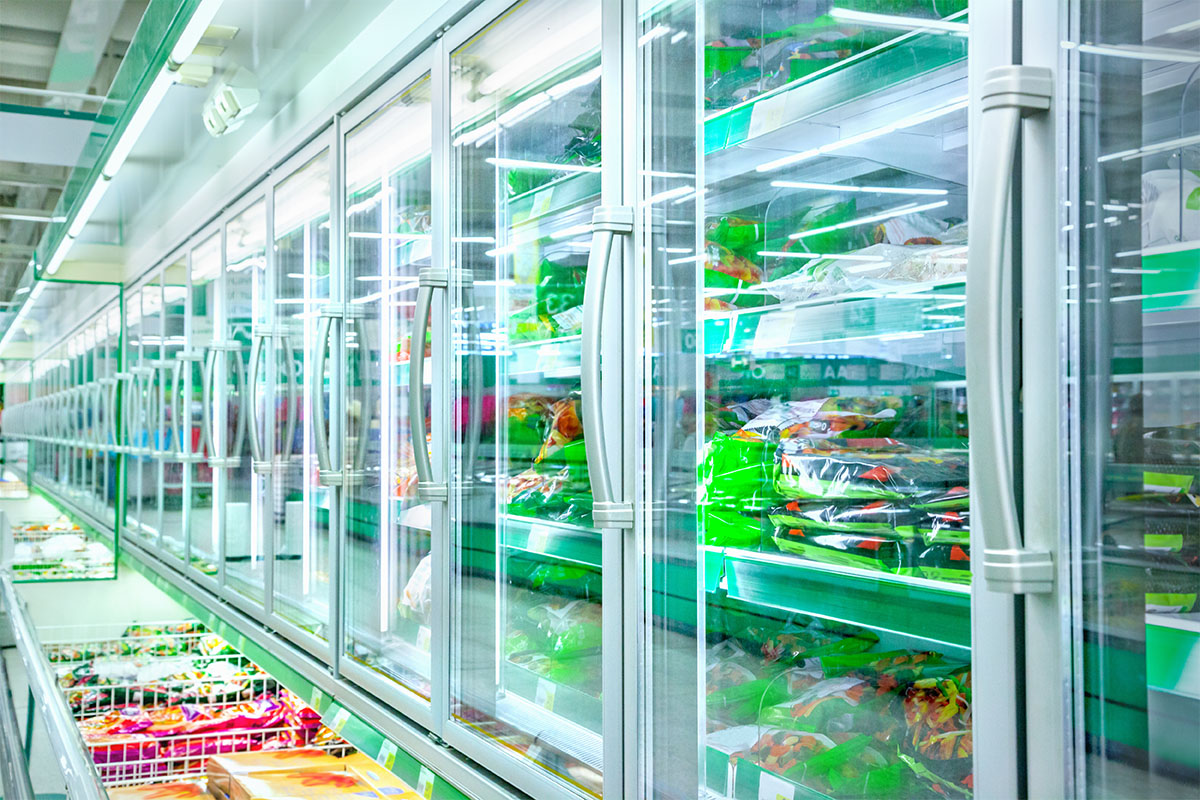If you’re in the supermarket business, you know cooling costs can burn up profits. The U.S. Small Business Association says cooling costs represent up to 60% of electricity consumption for businesses that rely on commercial refrigeration.
Fortunately, store managers can fight back with energy-saving best practices. One of the most important is using electronically commutated motors (ECMs). An experienced supermarket refrigeration technician can check energy management systems (EMS) parameters, perform sensor calibration and fine-tune expansion valve performance, or “superheat,” to determine the proper refrigerant charge and confirm system efficiency.
Beyond that, you’ll want to address any potential problems with walk-ins, reach-ins and display cases. These cooling units can be substantial energy wasters. This also means they offer excellent opportunities to increase energy efficiency and save money.
Here are some tips that can make a big difference for supermarkets when it comes to reducing their electricity bills:
1) Keep the cold in and the warm out – Make sure seals are tight, and door gaskets and auto closers work properly to conserve energy and preserve food.
2) Close open display cases — Enclose refrigerated display cases and cut energy use by up to 75% for huge savings.
3) Group like items together – Organize similar items in the cooler or freezer, so units are full but allow for good airflow and easy product stocking.
4) Store cold products immediately — Avoid straining your cooling system by loading newly delivered cold items into the cooler or freezer ASAP.
5) Give your system space – Make sure your refrigeration coils have plenty of breathing room to work efficiently and keep your system running smoothly.
6) Clean heat exchange coils regularly – Keep coils free of dirt and dust, so the compressor doesn’t work harder or longer than it needs to. Dirty coils can boost energy usage and shorten the life of your equipment.
7) Use LED lighting – LED lighting offers a triple win: it uses less energy, generates less heat, and improves product visibility and appeal.
8) Upgrade to energy-efficient equipment – New equipment can save upwards of 30% on refrigeration costs. Inquire with local energy companies about rebates and vouchers that may sweeten the deal.
9) Schedule regular refrigeration maintenance and system checks – This is critical for maximizing energy efficiency and getting ahead of any cooler or freezer problems.
Need help? Have a reputable commercial refrigeration company do an energy audit and troubleshoot leaks or concerns. Once you identify where you’re wasting energy, you can start saving it—and saving money as well.



